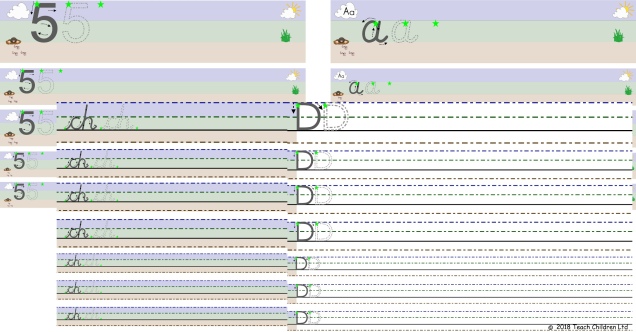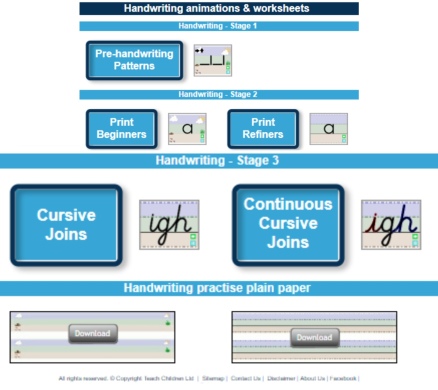Just as the writing tool used by your child changes as they develop, so does the paper they write on.
Informal Pre-handwriting Pattern and Initial Letter Development
If your child is just starting out on the handwriting adventure then any type of plain paper (no ruled lines) is considered the best option, as many children find it less restrictive.
Young children, due to the stage of their physical development, use large movements to draw (from the shoulder rather than the wrist) which often creates larger shapes and lines; you don’t want to restrict this movement as it can cause handwriting difficulties later. As their gross and fine motor skills develop so does their pencil grip and ability to draw and write at a smaller scale, moving more from the shoulder to elbow and wrist.
Formal Pre-handwriting Pattern and Letter Development
When your child is ready to refine their pre-handwriting pattern skills, or move on to forming letters, it is a good idea to use plain paper. The aim at this stage is to learn how to form the letters correctly, not size or neatness as that comes later.
Before moving to lined paper, to help your child begin to appreciate letter proportions and positioning, paper with picture clues can be used.
On our website the free writing paper and animations reinforce the idea of letter proportions and positioning by splitting the backgrounds into three colour zones to represent the sky, grass and earth. There are a number of reasons why this can be beneficial:
- It can create a sub-conscious memory in your child’s mind of where particular letters sit in relation to others without the constraints of lines or obvious boundaries, especially as the picture can be any size. Children remember where to place the sun, grass or worms in their drawings; so why not letters?
- It can be easier to talk through the formation of how a shape or letter is formed with pictorial and colour clues to guide and inform the direction of the movements required.
- As your child’s fine motor skills develop so the size of the picture/colour clues can be reduced to match their progress.
As your child’s fine motor skills develop it enables them to form smaller more refined versions of the letters and this is when it is more appropriate to use lined paper.
To download different line heights of our picture and coloured coded paper, scroll to the bottom of our ‘Handwriting Animations and Worksheets Page’: http://bit.ly/2F9P7cI





